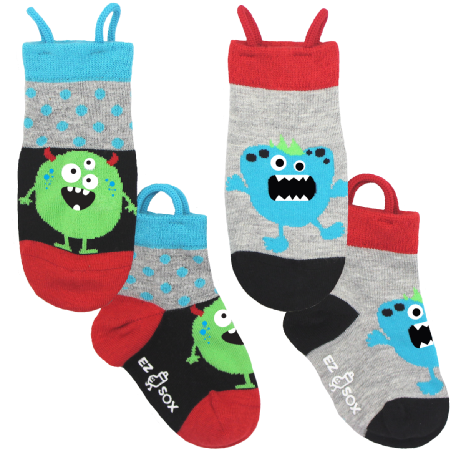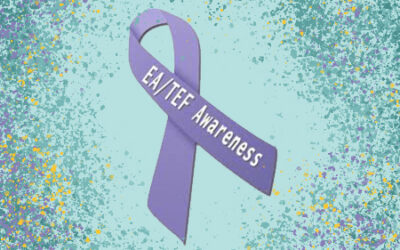The Invasion of the Red Dye 40 Brain Snatchers

The invasion of the Red Dye 40 brain snatchers wreaked havoc at Lisa Pelissier’s house not too long ago. In this post, written after she snatched her brain back, she shares how artificial dyes can affect children with certain disabilities and special needs. She also offers tips on how to lessen the problems these dyes cause.
My brain has been off for the last couple weeks. I’ve been depressed. Anxious. Paranoid. I’ve been having panic attacks. I blamed it on overeating when my in-laws were in town. (They took us out to dinner several times and it was delicious!) I blamed it on eating sugar—I don’t usually eat much of it, but we had ice cream in the house… and the rest is history. I blamed it on chocolate, which I usually only eat once a week, but had splurged and eaten it for three days.
Then I figured it out.
I read the label on the back of some potato chips that I had been doling out to myself in small portions for the past two weeks. My pale yellow potato chips had Red 40 in them.
Our family had fallen victim to the invasion of the Red Dye 40 brain snatchers.
I do not react well to Red 40. If I eat it, I get really angry. It usually happens the day after I eat the exquisite, mouthwatering, scrumptious Nacho Cheese Doritos. When I eat that fine ambrosia, symptoms ensue. Usually I’m careful, but not this time. After all, who would think there was Red 40 in sour cream and onion chips? I had eaten them every day for two weeks.
According to the Cleveland Clinic, side effects from Red 40 can include hyperactivity and other ADHD symptoms, irritability, depression, hives, asthma, sneezing and other allergy symptoms, skin irritation, and migraines. The New York Post says that Red 40 can be a factor in gut diseases as well. My daughter who has ADHD gets worsening symptoms, including restless leg syndrome, if she eats it.
In fact, Red 40 is banned in most of Europe.
Other food dyes can potentially be harmful as well, including Red 3, Yellow 5 & 6, Blue 1, and others. A study from 2012 reveals that many food dyes are potential carcinogens or contain them. The authors of the study recommend that “all of the currently used dyes should be removed from the food supply and replaced, if at all, by safer colorings.”
It is difficult to say no to processed foods, especially in a culture where food is used as for celebration, reward, and comfort. How do you say no when your child’s team wins, and the reward is a sugary treat full of food dyes? How do you say no when your child is at a birthday party and there is a pink cake? How do you say no when…. Nacho Cheese Doritos? I mean, come on!
But then I consider the alternative.
My kids live with autism, ADHD, and mental health disorders, so saying no is important.
Is pink cake worth more than a quiet, calm state of mind?
Is that sugary reward worth more than a good night’s sleep?
Are Nacho Cheese Doritos (sob!) worth more than feeling peaceful instead of paranoid?
Saying no is important. But there are other ways to respond than with a hard, dictatorial “No!” Here are my tips for avoiding the invasion of the Red Dye 40 brain snatchers.
1) Make sure nothing you put in your pantry on a regular basis includes Red 40 or other artificial food dyes. This includes medications, to the degree that you are able. This way, you avoid accidentally exacerbating any symptoms your child already has.
2) Be mindful of what your child is consuming at parties and celebrations. Keep portions under control. Have one red-velvet cupcake, not one red-velvet cupcake, a cup of red fruit punch, and some red licorice. Thoughtful consumption can still feel like a celebration without ingesting too much of a harmful chemical.
3) Watch for symptoms after consumption of foods containing Red 40 and other artificial food dyes. If symptoms are mild, manageable, and fade quickly, then maybe the splurge was worth it. If symptoms are extreme, out of control, or persist for days, you might want to avoid Red 40 altogether.
4) Look for food options with natural food colorings. Companies, even mainstream manufacturers, have been moving toward using natural food colorings instead of artificial dyes. You can even purchase food coloring made from natural ingredients. The colors are not as vibrant as those made with artificial dyes, but the switch is worth it.
How does Red 40 affect your children? What replacements have you found for popular red foods and drinks? Post in the comments below.
Do you like what you see at DifferentDream.com? You can receive more great content by subscribing to the monthly Different Dream newsletter and signing up for the daily RSS feed delivered to your email.
Photo by Fernanda Rodríguez on Unsplash

By Lisa Pelissier
Lisa Pelissier lives in Oregon where she is a homeschooling mother of four (three with disabilities) and author of four middle-grade fiction novels as well as a YA fantasy novel. Lisa owns SneakerBlossom Books, offering Christian, classical homeschool Study Guides and curriculum. She blogs at Eleventh Willow, offering encouragement for Christians parenting the mentally ill. She also works as a freelance copy editor, an artist, and a substitute teacher. In her spare time Lisa enjoys playing the piano and fretting about things over which she has no control.
Subscribe for Updates from Jolene
Related Posts
How Can an EA/TEF Parent’s Anxiety Be Held in Check Before their Child Starts School?
Karena Skibinski shares her answers to the question: How can an EA/TEF parent’s anxiety be held in check before their child starts school?
Ringing in the New Year with EA/TEF Awareness Month
Jolene Philo is ringing in the New Year with EA/TEF Awareness Month for the fifteenth year at Different Dream.
When God Redeemed My Worst Christmas Ever and Used It for Good
Jolene Philo relates the tale of when God redeemed her worst Christmas ever and used it for good—42 years later.






0 Comments